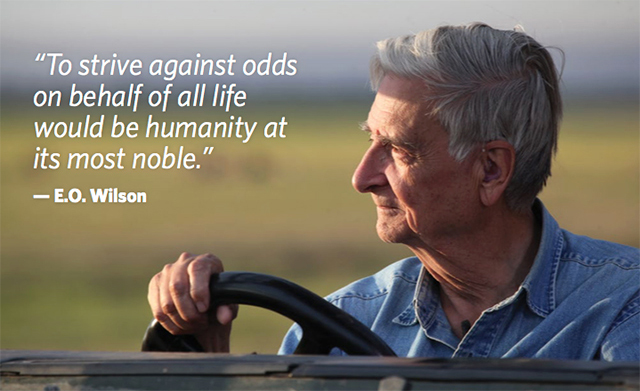

The E.O. Wilson Biodiversity Foundation is pleased to announce our upcoming “Biodiversity Days” on March 2nd and 3rd at The Carolina Theatre and the Nicholas School of the Environment at Duke University in Durham, North Carolina. This year’s theme is “Half-Earth.”
Biodiversity Days are focused on cultivating awareness and promoting understanding as a key foundation for engagement, action and inspired care of our planet.
Half-Earth is E.O. Wilson’s call to save half the Earth for the rest of life. Join the Half-Earth Project program partners and Half-Earth Council at The Carolina Theater and the Nicholas School of the Environment at Duke University for two full days of public lectures, roundtable discussions, and film screenings about how the Half-Earth Project will bring this grand vision and important goal to life.
Highlights include:
• Thursday, March 2, 7:00 pm – E.O. Wilson, The James M. and Cathleen D. Stone Distinguished Lectureship in Biodiversity: “Half-Earth: How to Save the Natural World” with panel discussants Thomas Lovejoy (George Mason University), John Seager (Population Connection), and Louie Psihoyos (Oceanic Preservation Society) and joined by singer, Paul Simon, for a special appearance and announcement (The Carolina Theatre, Durham, NC)
• Friday, March 3, 9:00 am — Tom Friedman (The New York Times), “Uprooted and On the Move.” Film and discussion followed by Q&A with E.O. Wilson (Field Auditorium, Environment Hall, Nicholas School of the Environment, Durham, NC)
• Friday, March 3, 4:30 pm — Closing Event: Lecture by Jeff Sachs, “Forging Global Cooperation to Save the Biosphere” followed by a reception featuring book signings with E.O. Wilson (Half-Earth: Our Planet’s Fight for Life) and Jeff Sachs (Building the New American Economy: Smart, Fair and Sustainable), tropical conservation student posters, and refreshments (Field Auditorium, Environment Hall, Nicholas School of the Environment, Durham, NC)
E.O. WILSON BIODIVERSITY FOUNDATION PRESIDENT & CEO PAULA EHRLICH PREVIEWS BIODIVERSITY DAYS 2017 ON WRAL
Preview Video #1


Preview Video #2




Biodiversity Days will take place March 2–3, 2017
TICKETS AVAILABLE FEBRUARY 1 FOR E.O. WILSON’S LECTURE
Tickets for the March 2nd evening lecture by E.O. Wilson are available starting February 1 in person at the Carolina Theatre Box Office, over the phone at 919-560-3030, or online at carolinatheatre.org.
All other Biodiversity Days 2017 daytime events are free and open to the public, and no tickets are required.
Please check this page often for the latest updates.
Other Biodiversity Day programming includes:
WEDNESDAY, MARCH 1
5:00–7:30 pm: Open House—Hosted by NatureServe
- NatureServe Durham Office, 601A Foster St. (corner of Foster St. and Corporation St., just a few blocks north of the aloft hotel), Durham, NC, 27701
- Kick off Biodiversity Days with an evening of good cheer among biodiversity champions! Come meet NatureServe’s new President & CEO, Dr. Gregory A. Miller, and join the conversation.
- RSVP to Jessica_hamke@natureserve.org
THURSDAY, MARCH 2
Day 1: Biodiversity Days
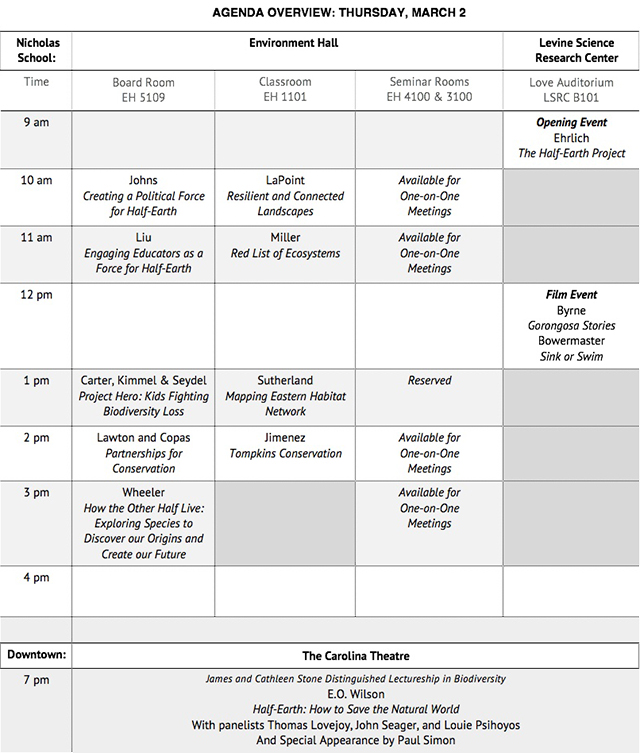

9:00 am: Paula Ehrlich (E.O. Wilson Biodiversity Foundation)
‘The Half-Earth Project’
Love Auditorium, 9 Circuit Drive, Nicholas School of the Environment at Duke University
Our survival is inextricably entwined with the survival of all species that call our planet home, yet our current destructive trajectory is resulting in mass extinction of species and irreparable damage to our world. With his Half-Earth call-to-action, E.O. Wilson has created the groundwork for one of the grandest conservation efforts of our time, the Half-Earth Project. Join Dr. Paula J. Ehrlich, President & CEO of the E.O. Wilson Biodiversity Foundation, for this opening address about the Half-Earth Project, which will work to provide the urgently needed research, leadership and engagement necessary to conserve half the planet for the rest of life.
Dr. Ehrlich is the President & CEO of the E.O. Wilson Biodiversity Foundation, where she champions biodiversity research to inform conservation efforts, and uses pioneering educational tools and creative media to engage people in the importance of our biological heritage and to encourage a robust response to the extinction crisis. Dr. Ehrlich has more than 25 years of strategic scientific management and research expertise, and diverse academic, non-profit, and corporate leadership experience.
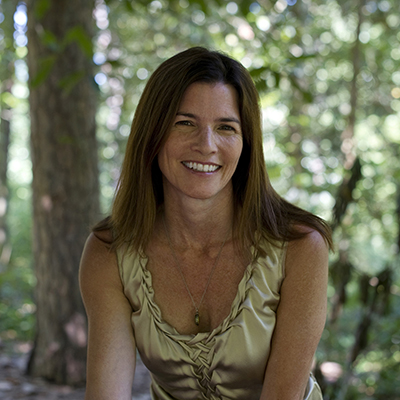

10:00 am: David Johns (The Wildlands Network and Marine Conservation Institute)
‘Creating a Political Force for Half-Earth’
Board Room (EH 5109), 9 Circuit Drive, Nicholas School of the Environment at Duke University
The main obstacles conservation faces are political, not scientific or biological. The solutions are also political. Conservation is too politically weak to bring about the changes needed in human societies to halt their destruction of biodiversity and the wild. We know what must be done to safeguard half of the Earth: successful movements for fundamental change have a clear, bold vision; they persevere; they pursue insider and outsider approaches as part of a grand strategy, including mass mobilization; movement organizations are embedded in a larger community; they are uncompromising on goals but flexible in means; they exploit divisions among elites and system crises; and they understand power—elites do not give ground without a fight.
This presentation focuses on the centrality of mass mobilization and organizing—the creation of a large cadre of activists in lieu of mere check-writers supporting so-called professionals—to fundamental change. The kind of change that brought down Apartheid, that abolished legal slavery, or gained labor rights. Organizing is not new—the first Earth Day mobilized 20 million people or 10% of the US population. But conservationists pretty much abandoned it in the 1980s because it is difficult, long range and organizational leaders found activists difficult to control. Yet without lobbying backed by protest, boycotts, and other grassroots campaigns that have the capacity to make normalcy difficult or impossible if claims for equity among species is not met, we continue the slide into biological poverty. Many of the essential tools of organizing have also been abandoned. When we excite enthusiasm how do we fit people into our organizations? Where is our song, music, ritual, theater, myth-building, nascent narrative film? No movement is successful without these. It’s time we heeded the lessons of our own history and that of other movements.
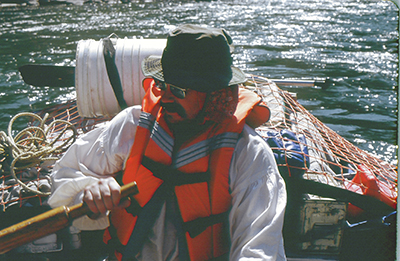

David Johns has been an advocate for large-scale conservation for more decades than he will admit. A co-founder of the Wildlands Network and Yellowstone to Yukon Conservation Initiative, he currently serves as chair of the Marine Conservation Institute which advocates for the Global Ocean Refuge System. He has been involved in many other large-scale conservation projects in the Russian Far East, Australia, Europe, Africa and in the Americas.
David has written and spoken widely on the integration of science and advocacy and served on the board of the Society for Conservation Biology from 2005 to 2014 and is a co-founder of the Conservation Biology Institute. He is author of A New Conservation Politics (2009), a manual on effective advocacy for conservationists. He has published in Conservation Biology,Environmental Ethics, Wild Earth, Science, in other journals, in edited volumes and has authored op-ed pieces and news analyses. He is recipient of the Denver Zoological Foundation’s Conservation Award, 2007.
David also teaches politics and law at Portland State University’s Hatfield School of Government. He has degrees in Political Science and Anthropology from Portland State University and in Political Science and Law from Columbia University where he was also an International Fellow, Harlan Fiske Stone Scholar and earned a Parker Certificate in Comparative Law.
10:00 am: Jodie LaPoint (The Nature Conservancy)
‘A Half-Earth Vision for Eastern North America: a Dynamic Stage for Nature’s Diversity’
Classroom (EH 1101), 9 Circuit Drive, Nicholas School of the Environment at Duke University
The climate is changing, and nature is in flux. Plants and animals must relocate to adapt and survive. How do we ensure that the North American landscape will continue to support its iconic wildlife and vast botanical diversity? The Nature Conservancy has recently completed an eight-year project to identify and map the area needed to sustain the full diversity, resilience, and connecting flows of nature across Eastern North America. The results of the study integrates this information to provide a blueprint for conservation—41% of the region – that will sustain biodiversity and facilitate range shifts of species. Involving over 60 scientists and using over 100 spatial datasets, the study identifies climate-resilient sites representing every geophysical habitat, climate corridors and flow zones that allow for species movement, and 80,000 confirmed rare species and community locations. The network currently stores over 56% of the region’s above-ground carbon, contains 75% of the high value water supply lands, and is already 30% protected. We urge agencies, municipal planners, land trusts, and other NGOs to consider this network in planning for energy citing, road mitigation, land management, and land acquisition.
Jodie LaPoint is the Assistant Director of Conservation for the North Carolina chapter of The Nature Conservancy. The Nature Conservancy protects ecologically important lands and waters around the world, and has protected 82 million acres world-wide. Jodie has been with The Nature Conservancy for over 10 years and her role includes conservation and strategic planning, land protection, and financial management. She has a Master of Environmental Management degree from the Nicholas School of the Environment at Duke University (2005) and an undergraduate degree in Anthropology from Grinnell College (2000).
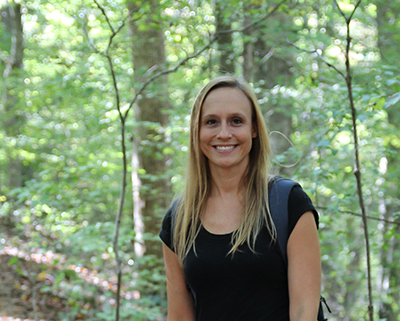

11:00 am: Dennis Liu (Howard Hughes Medical Institute)
‘Engaging Educators as a Force for Half-Earth’
Board Room (EH 5109), 9 Circuit Drive, Nicholas School of the Environment at Duke University
HHMI’s BioInteractive Media team has been producing materials and providing professional development for science educators for nearly 20 years through www.biointeractive.org, which gets over 2 million unique visits annually. We have direct contact with nearly 10,000 science high school and college instructors every year and reach about 80,000 subscribers through our newsletter and social media channels. Our work emphasizes the process of science and how we know what we know. The key to our success has been understanding the needs of teachers and tying it to the constraints they operate under: dominant textbooks, curriculum standards, and high stakes testing. We work across disciplines focusing on life science from molecular genetics, to evolution, and more recently ecology and the environment, including geobiology. AP Biology and AP Environmental Science course frameworks have been key tools for us to engage students with key messages and lessons via their teachers. I’ll show examples of some of work such as an animation on coral bleaching, our Wildcam Gorongosa citizen science project, short videos showing scientists at work on biodiversity studies, and demonstrate two apps that may be useful for getting the word out on half earth: our Earthviewer app for iPad that explores the deep 4 billion year history of our planet, and the companion app Biome Viewer which emphasizes the current state of our planet including the distribution of biodiversity and the effects of a warming climate.
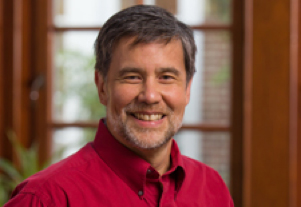

A nationally recognized expert in science education, Dennis has directed the production of educational media at the Howard Hughes Medical Institute since 1997. His team of scientists, education specialists, and graphic designers work with research scientists, animators, educators, and filmmakers to produce an array of educational products. Their work includes lectures, short films, animations, virtual labs, and a variety of supplementary materials for use in science classrooms, all of which are distributed free to educators in multiple formats. His team also produces short classroom films and supporting materials based on Tangled Bank productions. HHMI’s short films have been widely adopted by teachers and have received numerous awards, including Best Short Feature from the Jackson Hole Science Media Awards and a Labby Media Award from The Scientist magazine. As Executive Director of HHMI’s Tangled Bank Studios, Dennis oversees efforts to produce films and other media that appeal to general audiences to engage them in important and beautiful science stories.
11:00 am: Gregory A. Miller (NatureServe)
‘Initiating the IUCN Red List of Ecosystems in the Americas – Preliminary Findings for Temperate North America’
Classroom (EH 1101), 9 Circuit Drive, Nicholas School of the Environment at Duke University
Everyone knows that coral reefs are in danger, and that the rainforests are disappearing – or do we? What do we actually know in scientific terms? How much of these ecosystems are left, what are they threatened by, and how likely are they to disappear? Accelerating landscape change and climate change threatens biological diversity worldwide. Conserving this diversity hinges on our ability to understand changes in the condition of the ecosystems and the species they support. One important step is documenting the at-risk status of ecosystems. This is where NatureServe, IUCN, and other partners are taking action. With the generous support of the Gordon and Betty Moore Foundation and others, we have initiated the development of the IUCN Red List of Ecosystems of the Americas. Like the IUCN Red List of Species, a system that ranks species based on their risk of extinction, the Red List of Ecosystems ranks which ecosystem types should be considered “Vulnerable” “Endangered” or “Critically Endangered”. Side-by-side with species ranking of conservation concern, the Red List of Ecosystems provides a more complete picture of the status of biodiversity. Here we discuss some the technical issues and challenges – and initial findings – of red listing terrestrial ecosystems in North America.
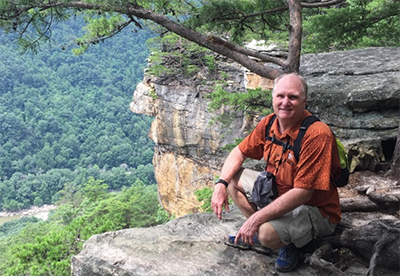

Dr. Gregory A. Miller has more than thirty years of experience in biodiversity conservation, sustainable recreation, and natural resources program and policy development. Prior to joining NatureServe, Dr. Miller served as President of American Hiking Society and led a distinguished executive career as Vice President at The Nature Conservancy. He has served on the boards of the U.S. Agency for International Development-funded global Biodiversity Support Program, Global Energy and Biodiversity Initiative, Outdoor Alliance, The International Ecotourism Society, Blue Ridge Center for Environmental Stewardship, National Park Service Over-flight Advisory Group, and served as an environmental advisor for the Latin America and Caribbean Bureau of the U.S. Agency for International Development. A native of California, Dr. Miller is fluent in Spanish and English. He graduated from the University of California, Santa Barbara with a bachelor’s degree in botany and holds a Ph.D. in Ecology from the University of Connecticut, with research interests in the ecology of the tropical alpine (paramos) zones of South America. Dr. Miller was awarded a prestigious Science, Engineering, and Diplomacy Post-Doctoral Fellowship through the American Association for the Advancement of Science. Greg lived and worked as a naturalist in the Galapagos Islands and the Andes for many years and has held a lifelong commitment to environmental stewardship, hiking, and the outdoors. He is a long-standing volunteer leader for the Boy Scouts and Girl Scouts of America.
12:00 noon: James Byrne (Greg C. Carr Foundation and the Gorongosa Restoration Project) and Jon Bowermaster (National Geographic Society Ocean Hero)
‘Gorongosa Stories: The Role of Media in the Gorongosa Restoration Project’ (James Byrne) and ‘Sink or Swim’ (Jon Bowermaster)
Love Auditorium (LSRC B101), 308 Research Drive, Duke University
‘Gorongosa Stories: The Role of Media in the Gorongosa Restoration Project’
The Gorongosa Restoration Project in Mozambique is one of the most visible conservation projects in Africa, and one of the most celebrated wilderness restoration stories in the World. This is no accident. From the beginning of the Project in 2008, Park Management made a strategic decision to employ multiple forms of media, particularly long-form documentaries, to advance their conservation goals. This media-friendly approach has culminated in the recent broadcast of a 6-part documentary series that aired on PBS in the USA and on National Geographic Channel International in 450 million homes worldwide. Media can help you win your conservation battles and communicate your science stories, but it helps to know some of the rules of engagement. In this session Gorongosa Media Director and ex-Nat Geo Producer, James Byrne, discusses the media strategy of the Gorongosa Restoration Project, shows clips from various Gorongosa films, and offers a few tips to scientists and conservations about how to tell their own stories.
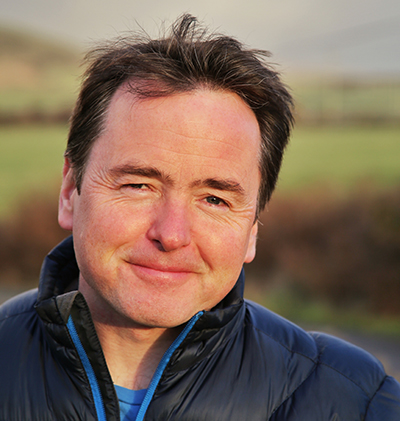

James Byrne is the Media Director at the Greg C. Carr Foundation and the Gorongosa Restoration Project. He produces long-form and short-form video for various platforms and audiences: TV, web/digital, social media, Education, live events, Partner communication needs, etc. Prior to joining the Carr Foundation in 2012, James worked at National Geographic Television in Washington D.C. for 12 years. There he produced and wrote multiple Emmy-Award winning films such as “Great Migrations”, “Untamed Americas”, and “Africa’s Lost Eden” (Nat Geo’s first film about Gorongosa.) Most recently, he was the Executive Producer and Series Producer of “Gorongosa Park: Rebirth of Paradise”, a 6-hour TV series that aired in 2015 on PBS in the USA and on National Geographic Channel International in over 450 million homes worldwide.
‘Sink or Swim, Learning The Crawl in the Maldives’
It’s amazing how many people who live surrounded by ocean, just a few feet above sea level, never learn to swim. In May 2014 National Geographic ‘ocean hero’ Jon Bowermaster organized a learn-to-swim camp in the Maldives to teach fifty third-graders and eighteen of their burka-clad mothers how to swim. In a place more threatened by global climate change and rising sea levels than almost anywhere on the planet, it is particularly important that its residents understand what’s at risk. Diving into the ocean is a big first step in that we only protect what we know.
The lessons also empowered both the children and their mothers; in a cultural and religious society not known for promoting equality, the fact that the women were happy to participate, happy to show up every day, was a great side story.
Also featured, former President Mohammed Nasheed, the “Island President,” known for his international work on behalf of protecting island nations from rising sea levels. Just after this filming he was arrested in his own country, charged with “terrorism,” and sentenced to 13 years in prison.
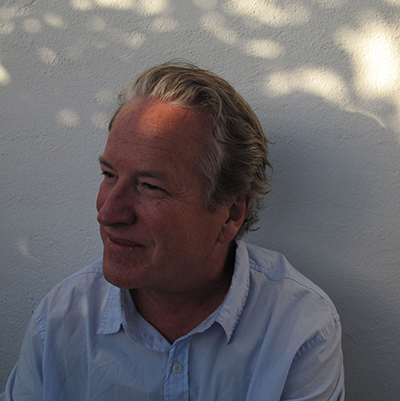

A six-time grantee of the National Geographic Expeditions Council and award-winning writer and filmmaker Bowermaster was recently named one of a dozen Ocean Heroes by the National Geographic Society.
Author of eleven books, he is also writer, director and producer of twenty documentary films, most recently “After the Spill, Louisiana Water Stories, Part II,” and “Dear President Obama, The Clean Energy Revolution Is Now,” produced with and narrated by actor/advocate Mark Ruffalo.
Current film projects include “The Ghost Fleet,” which looks at the global issue of fishing slaves, a six-part series for Vice.com, “Clean Water Wars” and the web series “The Hudson, A River at Risk.”
Bowermaster lives in New York’s Hudson Valley.
1:00 pm: Leesa Carter (Captain Planet Foundation), Courtney Kimmel (Captain Planet Foundation), and Laura Turner Seydel (Captain Planet Foundation)
‘Project Hero: Activating Kids to Fight Biodiversity Loss’
Board Room (EH 5109), 9 Circuit Drive, Nicholas School of the Environment at Duke University
When kids learn about biodiversity loss, there is a natural empathetic response to want to make a difference. This presents a unique opportunity – fan that spark of empathy, or dampen it. Project Hero is the collective response of a dozen national conservation organizations to the need to provide an accessible way to empower kids to act on behalf of biodiversity.
Project Hero is a web-based tool using a Project-Based Learning framework to expose kids to real-world biodiversity data, guiding them on a “Hero’s Quest” to explore life-science concepts by focusing on threatened species or ecosystem in THEIR region. Each Quest culminates in a hands-on habitat project students complete on behalf of a local species or ecosystem.
Members of the Hero Society – volunteer experts passionate about this work – are available to answer questions and provide wisdom and inspiration via email, Skype, or even in person if they’re close. Each Hero’s Quest is unique with different incentives offered by partners who have “issued” the Quest. Captain Planet Foundation is leading the development of the platform, currently pilot testing a Pollinator Quest in four states – GA, CO, CA, and TX.


Leesa joined Captain Planet Foundation in 2012, and has helped the organization successfully launch Project Learning Garden, Project Hero, and the Institute at CPF. She is a respected speaker on sustainability, environmental stewardship, and youth empowerment programs.
Leesa has a BA in Communications from Wake Forest University where she graduated with honors, was on full athletic scholarship, and served as Captain of the Women’s Basketball Team and Academic All-American for two years. She has over 25 years of executive-level experience in industries such as: organic products, green building, and non-profit arts management.
Leesa serves on the Board of the Minnesota Colorectal Cancer Research Foundation, and the Steering Committee for Atlanta Community Foundation’s Grants to Green, FoodWell Alliance, and the Rocky Mountain Wolf Project: Restoring Colorado’s Natural Balance. In 2016, she served as a Judge for the 2016 FIRST Robotics Global Innovation Award and the Environmental City Pitch for the Mayor’s Fund of London. She is also a member of the 2012 Institute for Georgia Environmental Leadership.
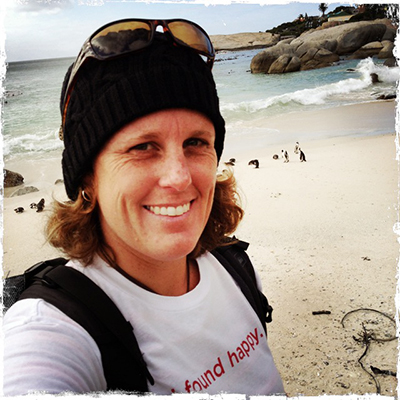

Courtney Kimmel joined the Captain Planet Foundation as Director of Strategic Partnerships in 2015. Prior to this, she held an academic position at Virginia Tech’s Center for Leadership in Global Sustainability, where she developed and taught graduate and professional programs on cross-boundary interventions to direct more sustainable forms of development, with a particular emphasis on institutional systems change in rapidly urbanizing regions of the world. She has done research on sustainability systems across the US as well as in India, South Africa, Brazil, and China.
In addition to her work with CPF, Courtney remains engaged in projects relating to affecting institutional change to strengthen regional food systems, urban forestry and green infrastructure programs, water resource management, and climate adaptation programs. Courtney has a BA in Economics and Anthropology from St. Mary’s College of Maryland, a MA in Political Science, and a PhD in Forestry and Environmental Conservation, both from Virginia Tech. Courtney grew up on the Chesapeake Bay in Maryland.
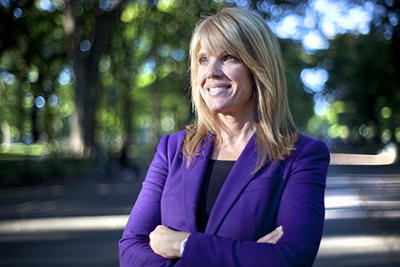

Laura Turner Seydel is an international environmental advocate and eco-living expert dedicated to creating a healthy and sustainable future for our children. Laura is chairperson of the Captain Planet Foundation, which promotes hands-on environmental education projects worldwide. She is a director of and works with the Environmental Working Group to limit the toxic chemicals in food, air, water and consumer products. In 2004, she co-founded and is Board Chair of Mothers and Others for Clean Air, an official program of the American Lung Association Southeastern Region. In 1994, she and her husband co-founded Chattahoochee Riverkeeper. Laura serves on the boards of her family’s foundations: the Turner Foundation, Turner Enterprises Inc, Jane Smith Turner Foundation, the Turner Endangered Species Fund, and Ted’s Montana Grill. She serves on the national boards of the League of Conservation Voters, Waterkeeper Alliance and the Carter Center Board of Councilors; she also serves on the advisory board for the Ray C. Anderson Foundation and board of directors of the Rotary Club of Downtown Atlanta.
Laura lives with her husband and three children in Atlanta. Their home, EcoManor, is the first LEED-certified Gold residence in the southeastern United States.
1:00 pm: Ron Sutherland (Wildlands Network)
‘Mapping a Habitat Network for Eastern North America: Pathways to Half-Earth’
Classroom (EH 1101), 9 Circuit Drive, Nicholas School of the Environment at Duke University
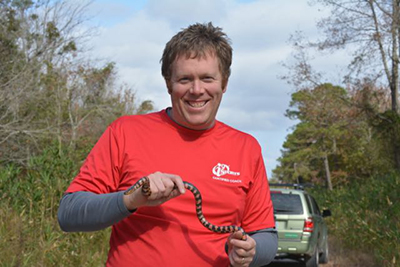

Wildlands Network has long played a leadership role in promoting a vision of truly large-scale biodiversity conservation. Here in eastern North America, we are leading a coalition of partner groups to map out an effective habitat network stretching from the Florida Keys to southeastern Canada. This “Eastern Wildway” will delineate a braided stream of wildlife movement corridors connecting the major core natural areas that still exist up and down the east coast. Such a network would provide numerous benefits for protecting biodiversity, including increasing the regional population viability of wide-ranging species and providing migration routes for plants and animals to move in response to climate change. In this presentation, Wildlands Network’s Conservation Scientist Ron Sutherland will unveil the Eastern Wildway mapping and data integration efforts that are currently underway, and discuss how this sort of continental-scale connectivity planning could make essential contributions to the broader effort to map and protect “Half-Earth”.
Ron has served since 2010 as the Conservation Scientist for Wildlands Network, a nonprofit organization dedicated to reconnecting nature in North America. Ron has degrees from NC State University, the University of Wisconsin-Madison, and Duke University. His Ph.D. dissertation work focused on using roads to survey vertebrate populations along gradients of urbanization and traffic in the Sandhills region of NC. He has also studied sustainable hunting in Bolivia, and flatback sea turtle nesting in Australia. For Wildlands Network, Ron has been focusing on connectivity modeling, road ecology, and carnivore ecology and conservation, looking across North Carolina and other southeastern states.
2:00 pm: Jane Lawton (The B Team) and Kyle Copas (Global Biodiversity Information Facility)
‘Business and Biodiversity: The Critical Importance of Multi-Stakeholder Partnerships for Conservation’
Board Room (EH 5109), 9 Circuit Drive, Nicholas School of the Environment at Duke University
Overcoming the challenges inherent in conserving biodiversity and the living world will require a coordinated effort on the part of all sectors – government, NGOs and the business sector. This session will explore some innovative new approaches to multi-sector partnerships for delivering change.
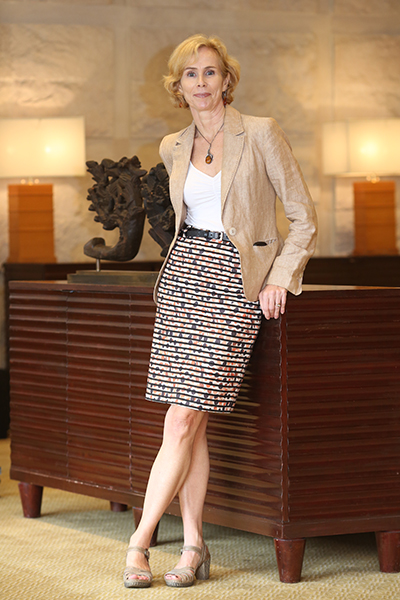

Jane has more than 25 years of international experience working with leading organizations focused on sustainable development and nature conservation. In her current role, she leads resource development and community building activities in support of The B Team’s efforts to change the purpose of business in the world so that it benefits people and planet. Prior to joining The B Team she worked with IUCN (International Union for Conservation of Nature) as Head of Private Sector Engagement for Asia, overseeing IUCN’s business and biodiversity portfolio across the organization’s 10 Asian country offices.
Jane has also served as Chief Executive Officer at the Jane Goodall Institute of Canada, leading program design for integrated conservation and development projects in Africa; and has held senior roles at the Nature Conservancy of Canada (NCC) and Aga Khan Foundation Canada. Over the course of her career she has gained significant experience in organizational management, programme design, fundraising, communications and marketing, and expertise in building successful partnerships to deliver change.
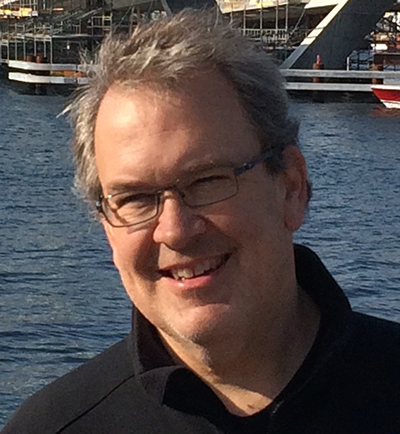

Trained as a poet, writer and documentary filmmaker, Kyle Copas is a creative and communications professional whose work spans sustainability and biodiversity sectors. He joined the GBIF Secretariat in Copenhagen in 2014, now serving as communications manager for its network and open data research infrastructure. From 2007 to 2014, he played a variety of roles at NatureServe, where he was deeply involved in the development of LandScope America. He is also associate producer of World Peace and Other 4th-Grade Achievements, an award-winning documentary profiling the work of master teacher and noted TED speaker John Hunter. Copas had previously acted as communications director for the pioneering architecture and sustainable planning design firm, William McDonough + Partners, as well as working as a freelance writer, editor, designer and curator.
2:00 pm: Ignacio Jiménez Pérez (Tompkins Conservation)
‘25 Years of Tompkins Conservation: Lessons Learned in Park Creation and Rewilding’
Classroom (EH 1101), 9 Circuit Drive, Nicholas School of the Environment at Duke University
Tompkins Conservation (TC) was created by philanthropists Douglas and Kristine Tompkins as a response to the biodiversity crisis. As of 2016, TC has assembled the world’s largest private nature park (Pumalín Park) and worked in partnership with governments in Chile and Argentina to create 6 new national parks and several protected areas, in aggregate conserving more than 3.4 million acres. Current TC projects will, if successful, result in the designation of 6 additional national parks, expand 3 others, and add over 10 million more acres to the national park systems of Chile and Argentina. TC’s unprecedented record of park-oriented conservation philanthropy has been augmented by the most ambitious “rewilding” program in Latin America, which works to conserve imperiled species such as huemul deer and maned wolves, and to reintroduce missing native species such as giant anteaters, pampas deer, collared peccaries, tapirs, and jaguars to its focal protected areas.
During their 25 years of work, and inevitable controversy, TC has honed its approach depending on the local situation. First, they seek to return an area to its historical ecological integrity, which may include habitat restoration and reintroduction of locally extirpated species. At the same time they complement the scenic beauty of the area through careful design of public-access infrastructure, using architecture based on local styles and construction materials. TC then promotes public access to future parks, markets these areas as ecotourism destinations and establishes a dialogue with local stakeholders and governments so they see the parks as economic engines for their region. TC’s long-term on-the-ground commitment enhances local pride for regional natural and cultural recovery, turning controversy and animosity into trust and strong partnerships. Join this talk by Ignacio Jiménez to learn more about how TC creates parks that are ecologically and politically resilient for the long-term.
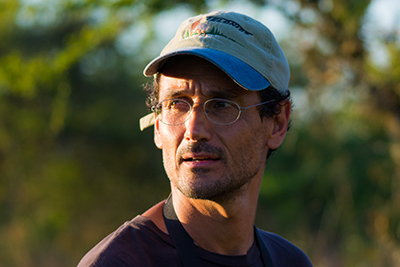

Originally from Spain, Ignacio has extensive international experience in conservation. He has coordinated research and management projects with manatees in Costa Rica and Nicaragua and with golden-crowned sifakas in Madagascar, worked on wetlands and protected areas in El Salvador, and coordinated and published a national assessment of the Spanish experience in endangered species recovery. He has a degree in Animal Biology from the Universidad de Valencia in Spain, and a Masters in Wildlife Management and Conservation from the Universidad Nacional in Costa Rica. He has worked for The Conservation Land Trust in Argentina since 2005, where he has coordinated the largest reintroduction program in the Americas. This initiative includes species such as the giant anteater, pampas deer, tapir, peccary, green-winged macaw, maned wolf and jaguar. He spent 2016 living in South Africa in order to learn about how public and private organizations in Africa manage and integrate nature reserves, rewilding and ecotourism.
His main theme of interest is identifying organizational factors behind successful conservation programs and institutions. His research and conservation efforts have been featured in various scientific journals, books and other publications. He loves to train young and experienced conservationists, and has coordinated more than 30 training courses in Spain, Costa Rica, Guatemala, Argentina and Chile about interdisciplinary issues related to nature conservation. He has given presentations at international meetings and at TEDx. Presently, Ignacio acts as Vice President for The Conservation Land Trust in Argentina.
3:00 pm: Quentin Wheeler (College of Environmental Science and Forestry
‘How the Other Half Live: Exploring Species to Discover Our Origins and Create Our Future’
Board Room (EH 5109), 9 Circuit Drive, Nicholas School of the Environment at Duke University
To enable humanity to enjoy a rewarding life relying on its half of the planet, it is imperative that we explore and learn about the other half, the estimated ten million species with whom we share earth. Reasons to complete an inventory of species are clear. With knowledge of what species exist we can detect extinctions and invasions, measure conservation successes, and explore functions of ecosystems in great detail. We can understand what makes us human, since every human attribute is a modification of one found in an ancestor species. And we can preserve evidence of the evolutionary innovations of millions of species from which we can find inspiration for a sustainable generation of designs, materials, and processes. All of these benefits derived from a species inventory suppose a renewed commitment to taxonomy, scientific natural history, and natural history museums.
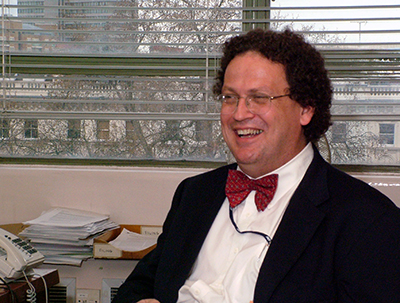

Quentin Wheeler is president of the College of Environmental Science and Forestry in Syracuse, New York. Before joining ESF in 2014, he was vice president and dean of the college of liberal arts and sciences at Arizona State University, keeper of entomology in London’s Natural History Museum, director of the division of environmental biology of the NSF, and a professor at Cornell University. His interests include the theory and practice of taxonomy and cybertaxonomy, the exploration and conservation of biodiversity, and the evolution and classification of insects.
7:00 pm: E.O. Wilson (Harvard University, E.O. Wilson Biodiversity Foundation
The James M. and Cathleen D. Stone Distinguished Lectureship in Biodiversity: ‘Half-Earth: How to Save the Natural World’ with panel discussants Thomas Lovejoy (George Mason University), John Seager (Population Connection), and Louie Psihoyos (Oceanic Preservation Society) and joined by singer, Paul Simon, for a special appearance and announcement
Carolina Theatre, 309 West Morgan Street, Durham, NC
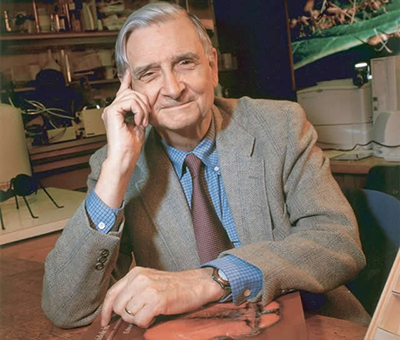

Edward Osborne Wilson is generally recognized as one of the leading scientists in the world. He is also recognized as one of the foremost naturalists in both science and literature, as well as synthesizer in works stretching from pure biology across to the social sciences and humanities. Wilson is acknowledged as the creator of two scientific disciplines (island biogeography and sociobiology), three unifying concepts for science and the humanities jointly (biophilia, biodiversity studies, and consilience), and one major technological advance in the study of global biodiversity (the Encyclopedia of Life). Among more than one hundred awards he has received worldwide are the U.S. National Medal of Science, the Crafoord Prize (equivalent of the Nobel, for ecology) of the Royal Swedish Academy of Sciences, and the International Prize of Biology of Japan; and in letters, two Pulitzer Prizes in non-fiction, the Nonino and Serono Prizes of Italy and COSMOS Prize of Japan. For his work in conservation he has received the Gold Medal of the Worldwide Fund for Nature and the Audubon Medal of the Audubon Society. He is currently Honorary Curator in Entomology and University Research Professor Emeritus at Harvard University, Chairman of the E.O. Wilson Biodiversity Foundation Board of Advisors, and Chairman of the Half-Earth Council.
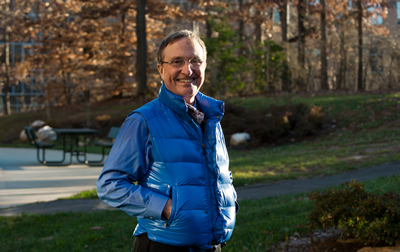

Thomas E. Lovejoy was elected University Professor at George Mason in March 2010. He also serves as Senior Fellow at the United Nations Foundation. From 2008-2013 he was the Biodiversity Chair at the Heinz Center for Science, Economics and the Environment and was President 2002-2008. An ecologist who has worked in the Brazilian Amazon since 1965, he works on the interface of science and environmental policy. Starting in the 1970s he helped bring attention to the issue of tropical deforestation and in 1980 published the first estimate of global extinction rates (in the Global 2000 Report to the President). He conceived the idea for the long term study on forest fragmentation in the Amazon (started in 1978) which is the largest experiment in landscape ecology, the Minimum Critical Size of Ecosystems project (also known as the Biological Dynamics of Forest Fragments Project). He also coined the term “Biological diversity”, originated the concept of debt-for-nature swaps and has worked on the interaction between climate change and biodiversity for more than 20 years. He is the founder of the public television series “Nature”. In the past, he served as the Senior Advisor to the President of the United Nations Foundation, as the Chief Biodiversity Advisor and Lead Specialist for the Environment for the Latin American region for the World Bank, as the Assistant Secretary for Environmental and External Affairs for the Smithsonian Institution, and as Executive Vice President of World Wildlife Fund-US. In 2002 he was awarded the The Tyler Prize and in 2009 he was the winner of BBVA Foundation Frontiers of Knowledge Award in the Ecology and Conservation Biology Category. In 2012 he received the Blue Planet Prize. He has served on advisory councils in the Reagan, George H.W, Bush, and Clinton administrations. In 2009 he was appointed Conservation Fellow by the National Geographic. He chairs the Scientific and Technical Panel for the Global Environment Facility which provides funding related to the international environmental conventions. He received his B.S. and Ph.D. (biology) from Yale University.


John Seager is the President and CEO of Population Connection. Before joining Population Connection, John was with the U.S. Environmental Protection Agency. John also served as Chief of Staff for former U.S. Representative Peter H. Kostmayer (D-PA), a senior member of the House Foreign Affairs and Interior committees.
A veteran of more than 50 political campaigns, John has published op-eds and articles on population growth for a number of news outlets including Huffington Post, GlobalPost, and RH Reality Check.
John frequently speaks at conferences on population, the environment, and women’s empowerment. He also presents at colleges and universities across the United States, including the University of Chicago, Smith College, and University of California-San Diego. John graduated from Trinity College (CT) with a B.A. in Political Science.
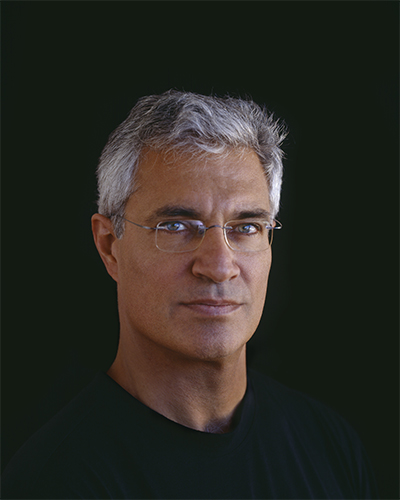

The Executive Director of Oceanic Preservation Society (OPS), Louie Psihoyos is widely regarded as one of the world’s most prominent still photographers. He has circled the globe dozens of times for National Geographic and has shot hundreds of covers for other magazines including Fortune Magazine, Smithsonian, Discover, GEO, Time, Newsweek, The New York Times Magazine, New York Magazine and Sports Illustrated.
Psihoyos’ first documentary film, “The Cove,” has won over 100 awards globally from festivals and critics, became the first Doc to sweep all the film guilds and won the Oscar® for Best Documentary Feature in 2009. In his newest film, “Racing Extinction,” a team of artists and activists exposes the hidden world of extinction with never-before-seen images that change the way we see the planet. Psihoyos is currently in production on a documentary about the world’s most accomplished athletes and nutrition.
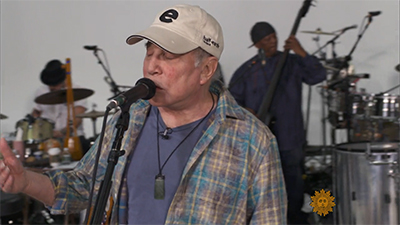

Paul Simon will give a solo performance of 3–4 songs and make a special announcement.
During his distinguished career Paul Simon has been the recipient of many honors and awards including 12 Grammy Awards, three of which (“Bridge Over Troubled Water”, “Still Crazy After All These Years” and “Graceland”) were albums of the year. In 2003 he was given a Grammy Lifetime Achievement Award for his work as half of the duo Simon and Garfunkel. He is a member of The Songwriters Hall of Fame, a recipient of their Johnny Mercer Award and is in the Rock n’ Roll Hall of Fame as a member of Simon and Garfunkel and as a solo artist. His song “Mrs. Robinson” from the motion picture “The Graduate” was named in the top ten of The American Film Institute’s 100 Years 100 Songs.
FRIDAY, MARCH 3
Day 1: Biodiversity Days
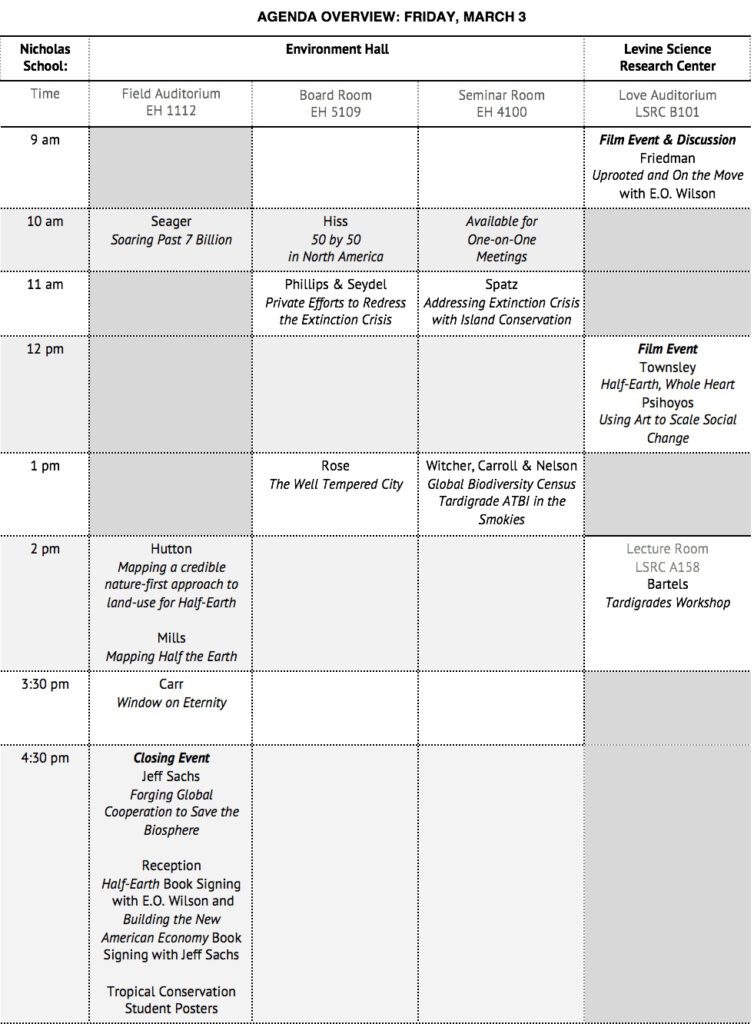

9:00 am: Tom Friedman (The New York Times). Film and discussion followed by Q&A with E.O. Wilson (Harvard University, E.O. Wilson Biodiversity Foundation)
‘Uprooted and On the Move’
Love Auditorium (LSRC B101), 9 Circuit Drive, Nicholas School of the Environment at Duke University
Film and discussion followed by Q&A with E.O. Wilson.
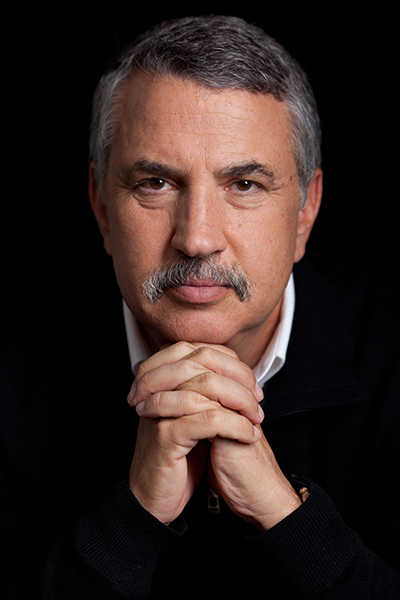

Thomas L. Friedman, an internationally known author and journalist, has won the Pulitzer Prize three times for his work at The New York Times. His foreign affairs column in The New York Times reports on US domestic politics and foreign policy, Middle East conflicts, international economics, environment, biodiversity and energy.
For his coverage of the Middle East, Mr. Friedman was awarded the Pulitzer Prize in 1983 and 1988 for international reporting. He was awarded the 2002 Pulitzer Prize for Distinguished Commentary for “his clarity of vision…in commenting on the worldwide impact of the terrorist threat.” In 2004, he was awarded the Overseas Press Club Award for lifetime achievement and the honorary title, Order of the British Empire (OBE), by Queen Elizabeth II.
Friedman is the author of From Beirut to Jerusalem, which won both the National Book and the Overseas Press Club Awards in 1989, a revised edition was released in December 2012. The Lexus and the Olive Tree, winner of the 2000 Overseas Press Club Award for best non-fiction book on foreign policy. Longitudes and Attitudes: Exploring the World After September 11, issued in 2002, consists of columns Friedman published about September 11. The World is Flat: A Brief History of the Twenty-first Century, issued in April 2005 and updated in 2006 and 2007, received the inaugural Goldman Sachs/Financial Times Business Book of the Year Award. In 2008 he brought out Hot, Flat, and Crowded, which was published in a revised edition a year later. His sixth book, That Used to Be Us: How American Fell Behind in the World We Invented and How We Can Come Back, co-written with Michael Mandelbaum, was released in 2011. His new book, Thank you For Being Late: An Optimist’s Guide to Thriving in the Age of Accelerations, published by Farrar, Straus and Giroux was released on November 22, 2016.
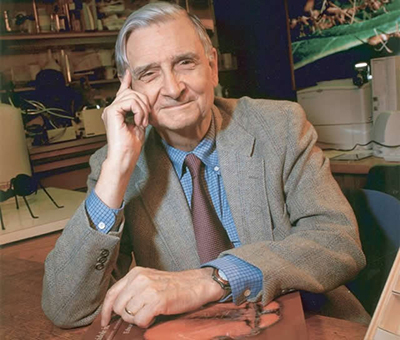

Edward Osborne Wilson is generally recognized as one of the leading scientists in the world. He is also recognized as one of the foremost naturalists in both science and literature, as well as synthesizer in works stretching from pure biology across to the social sciences and humanities. Wilson is acknowledged as the creator of two scientific disciplines (island biogeography and sociobiology), three unifying concepts for science and the humanities jointly (biophilia, biodiversity studies, and consilience), and one major technological advance in the study of global biodiversity (the Encyclopedia of Life). Among more than one hundred awards he has received worldwide are the U.S. National Medal of Science, the Crafoord Prize (equivalent of the Nobel, for ecology) of the Royal Swedish Academy of Sciences, and the International Prize of Biology of Japan; and in letters, two Pulitzer Prizes in non-fiction, the Nonino and Serono Prizes of Italy and COSMOS Prize of Japan. For his work in conservation he has received the Gold Medal of the Worldwide Fund for Nature and the Audubon Medal of the Audubon Society. He is currently Honorary Curator in Entomology and University Research Professor Emeritus at Harvard University, Chairman of the E.O. Wilson Biodiversity Foundation Board of Advisors, and Chairman of the Half-Earth Council.
10:00 am: John Seager (Population Connection)
‘Soaring Past 7 Billion: Population Challenges for a Crowded World’
Field Auditorium (EH 1112), 9 Circuit Drive, Nicholas School of the Environment at Duke University
John Seager, President & CEO of Population Connection will speak on “Soaring Past 7 Billion: Population Challenges for a Crowded World.” The talk addresses global population growth, its causes and impacts, and how we can meet those challenges. Global population grows by approximately 80 million people annually. In 1999, the United Nation’s Population Division projected that world population would reach 7 billion in 2013. Instead, we reached that milestone a full two years earlier than anticipated, hitting 7 billion in October 2011, and 7.4 billion in August 2016. Recent projections by the UN for a medium population number are 8.1 billion in 2025, 9.7 billion in 2050, and an astounding 11.2 billion in 2100.
John’s talk offers an overview of root causes, impacts and ways to meet the population challenge, illustrating the intersections between population stabilization, the environment, social equity, and women’s empowerment.
Population Connection is the preeminent grassroots group seeking to stabilize global population. We call attention to the ramifications of rapid population growth by educating, informing, and inspiring Americans to support voluntary methods to achieve global population stabilization—especially funding for domestic and international family planning. With 300,000+ members and supporters, we educate people and motivate activism.


John Seager is the President and CEO of Population Connection. Before joining Population Connection, John was with the U.S. Environmental Protection Agency. John also served as Chief of Staff for former U.S. Representative Peter H. Kostmayer (D-PA), a senior member of the House Foreign Affairs and Interior committees.
A veteran of more than 50 political campaigns, John has published op-eds and articles on population growth for a number of news outlets including Huffington Post, GlobalPost, and RH Reality Check.
John frequently speaks at conferences on population, the environment, and women’s empowerment. He also presents at colleges and universities across the United States, including the University of Chicago, Smith College, and University of California-San Diego. John graduated from Trinity College (CT) with a B.A. in Political Science.
10:00 am: Tony Hiss (NYU)
‘50 by 50: Protecting 50 Percent of North America by 2050′
Board Room (EH 5109), 9 Circuit Drive, Nicholas School of the Environment at Duke University
As a continent, the four countries of North America–Mexico, the U.S., Canada and Greenland–are uniquely gifted by geology and geography to put together the world’s first network of protected, connected landscapes. This system of open spaces and trails, anchored by our mountains, rivers and forests, will take its place as the natural equivalent of the U.S. Interstate Highway System. Based on a book in progress, this talk outlines the vision.
Tony Hiss was a New Yorker staff writer for more than 30 years and is now a Visiting Scholar at New York University. He is the author of 13 books, including The Experience of Place and most recently In Motion: The Experience of Travel.
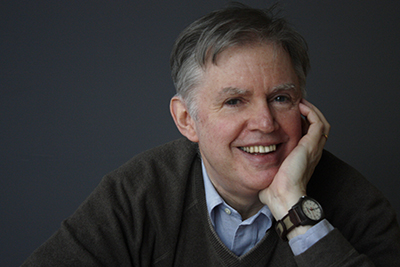

11:00 am: Mike Phillips (Turner Endangered Species Fund) and Laura Turner Seydel (Captain Planet Foundation)
‘Wolves, Condors, Snails, and Frogs: Private Efforts to Redress the Extinction Crisis’
Board Room (EH 5109), 9 Circuit Drive, Nicholas School of the Environment at Duke University
The extinction of untold numbers of plants and animal species has become one of humanity’s most pressing problems. The primary cause of the extinction crisis is habitat loss that occurs primarily on private land. Vast tracts of land are owned by a relatively small number of individuals, families, foundations, and other private entities. Engagement by these landowners from around the world is critical for reversing the dismal fate for many imperiled species. Unfortunately, many private landowners in the U.S., for example, are wary of the possible consequences of attracting or maintaining imperiled species to their property. In 1997 a historic effort began with the aim of replacing the fear and misinformation with hope and facts drawn from success stories that told of the importance of private land for conserving imperiled species. In the early summer of that year Ted Turner, his family, and Mike Phillips launched the Turner Endangered Species Fund and Turner Biodiversity Divisions as dedicated efforts to conserve biological diversity by ensuring the survival of imperiled species and their habitats, with an emphasis on private actions and private land. This talk will summarize the work of Team Turner and illustrate the importance of private land to the Half-Earth Project.
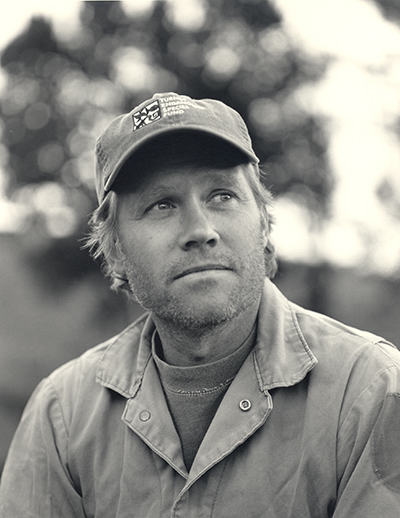

Mike received his M.Sc. in Wildlife Ecology from the University of Alaska (Fairbanks) in 1986 and his B.Sc., Ecology, Ethology, Evolution from the University of Illinois (Champaign) in 1980.
Mike Phillips has served as the Executive Director of the Turner Endangered Species Fund (TESF) and Coordinator of the Turner Biodiversity Divisions (TBD) since he co-founded both with Ted Turner in June 1997 (www.tesf.org). Prior to that Mike had worked for the U.S. Fish and Wildlife Service and National Park Service since 1981. During his employment with the federal government Mike served as the leader of historic efforts to restore red wolves to the southeastern US and gray wolves to the Yellowstone National Park. He also conducted important research on the impacts of oil and gas development on grizzly bears in the Arctic National Wildlife Refuge, predation costs for gray wolves in Alaska, black bear movements in northeastern North Carolina, and dingo ecology in Australia. Throughout his career as a conservation biologist Mike has focused on the recovery of imperiled species, integration of private land in conservation efforts, and socio-political aspects of natural resource use and management. In 2013 Dr. E. O. Wilson nominated Mike for the prestigious 2014 Indianapolis Prize.
Mike has authored hundreds of project reports and over 65 publications including peer-reviewed technical articles, book chapters, conference proceedings, government reports, popular articles, and one book. Mike is an accomplished speaker and has delivered over 200 public presentations for conservation organizations and professional conferences, including several invited plenary, keynote, and banquet presentations.
In 2006 Mike was elected to the Montana legislature as the representative for House District 66 in Bozeman. He served in that post from November 2006 thru November 2012 when he was elected to the Montana Senate. His service in the Senate will extend through 2020. His legislative work focuses on climate change and energy policy, and Mike was responsible for passing the nation’s most comprehensive legislation on geological sequestration of carbon. This led to an invitation from the White House to work directly with the Obama Administration and the US Senate on comprehensive green energy and climate change legislation.
Mike lives in Bozeman with his wife (Linda, research scientist, Ecology Department, Montana State University), their four children (Grace – 26, Drake – 22, Samuel – 20, Annabelle 8), and their two dogs Scout and Dew.


Laura Turner Seydel is an international environmental advocate and eco-living expert dedicated to creating a healthy and sustainable future for our children. Laura is chairperson of the Captain Planet Foundation, which promotes hands-on environmental education projects worldwide. She is a director of and works with the Environmental Working Group to limit the toxic chemicals in food, air, water and consumer products. In 2004, she co-founded and is Board Chair of Mothers and Others for Clean Air, an official program of the American Lung Association Southeastern Region. In 1994, she and her husband co-founded Chattahoochee Riverkeeper. Laura serves on the boards of her family’s foundations: the Turner Foundation, Turner Enterprises Inc, Jane Smith Turner Foundation, the Turner Endangered Species Fund, and Ted’s Montana Grill. She serves on the national boards of the League of Conservation Voters, Waterkeeper Alliance and the Carter Center Board of Councilors; she also serves on the advisory board for the Ray C. Anderson Foundation and board of directors of the Rotary Club of Downtown Atlanta.
Laura lives with her husband and three children in Atlanta. Their home, EcoManor, is the first LEED-certified Gold residence in the southeastern United States.
11:00 am: Dena Spatz (Island Conservation)
‘Addressing the Extinction Crisis through Island Conservation’
Seminar Room (EH 4100), 308 Research Drive, Duke University
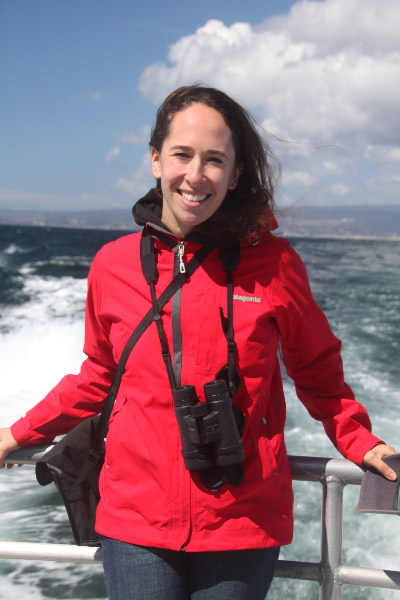

Dena Spatz is a Conservation Biologist at the non-profit, Island Conservation, based in Santa Cruz, California. At Island Conservation, Dena oversees the data science program, which includes managing global island biodiversity and island conservation action databases and using the information from these resources to inform conservation decision-making within the organization and with collaborators and partners. Dena also participates in the organization’s conservation measures program, which monitors change and recovery in island ecosystems before and after the eradication of non-native invasive species.
Island Conservation (IC) prevents extinctions by removing invasive species from islands. IC works collaboratively with government agencies, NGOs, local communities, and other stakeholders in island archipelagos. Together we remove invasive species from islands, build local capacity to undertake science-driven management of islands, develop invasive alien species removal techniques, and conduct applied research to inform island conservation action. Since 1994, IC has helped to protect nearly 1,000 populations of 389 plant and animal species on 52 islands globally.
12:00 noon: Graham Townsley (Shining Red Productions) and Louie Psihoyos (Oceanic Preservation Society)
‘Half-Earth, Whole Heart: Half-Earth and Conservation as a Spiritual Necessity’ (Graham Townsley) and ‘Using Art to Scale Social Change’ (Louie Psihoyos)
Love Auditorium (LSRC B101), 308 Research Drive, Duke University
‘Half-Earth, Whole Heart: Half-Earth and Conservation as a Spiritual Necessity’


Over the last 15 years, Graham has established himself in Washington DC as a well-known maker of high-end documentaries. His films have been shown on PBS, National Geographic TV, the BBC, Channel 4, ARTE and the Discovery Channel. He has also written screenplays for a number of historical dramas. He is twice Emmy-nominated.
In 2016, his multiple award-winning feature documentary, “Landfillharmonic”, about kids from a slum in Paraguay who made an orchestra out of trash, was released in theaters across the USA. Also in 2016, his PBS film about famed biologist E.O Wilson, “Of Ants and Men”, garnered awards and critical acclaim at numerous festivals across the country. His 2015 film for National Geographic and NOVA PBS, “Dawn of Humanity,” about the discovery of new fossil human ancestors in South Africa, was named by the New York Times as one of the ten best documentaries of 2015 and nominated for an Emmy award.
With a Ph.D in Anthropology from the University of Cambridge, Graham started his career working on ethnographic films for the BBC. Films like “The Shaman and his Apprentice” based on his own fieldwork with a tribe of the Peruvian Amazon and “From the Heart of the World”, about the Kogi Indians of the Sierra Nevada, Colombia, established him in the documentary world. He went on to make films both about other living indigenous peoples and ancient cultures such as the Inca, Maya, Aztecs and ancient Rome. In the early 2000’s he was series producer of “The Glory that was Rome” for the Discovery Channel and “Treasure Seekers”, a 13-part series about explorers of the ancient world, for National Geographic.
He has gone on to produce, write and direct films such as “Becoming Human”, a 3-part series on human evolution for NOVA PBS, “Dawn of the Maya” for National Geographic TV, “The Great Inca Rebellion”, “King Solomon’s Mines”, “Magic Mountain”, “Maya Apocalypse” and many more.


In 2008, Graham established his own company, Shining Red Productions. He speaks four languages and has made a number of Spanish-language films. He is currently developing a number of drama series: one about the Easter Uprising in Ireland and another about the Mexican Revolution. As of June, 2016, he is writing a screenplay about the remarkable story of the Jewish artists of the Judische Kulturbund in 1930’s Berlin. He lives in Washington DC.
‘Using Art to Scale Social Change’ by Louie Psihoyos
In this talk, Louie Psihoyos will talk about using film and media to scale social change.
The Executive Director of Oceanic Preservation Society (OPS), Louie Psihoyos is widely regarded as one of the world’s most prominent still photographers. He has circled the globe dozens of times for National Geographic and has shot hundreds of covers for other magazines including Fortune Magazine, Smithsonian, Discover, GEO, Time, Newsweek, The New York Times Magazine, New York Magazine and Sports Illustrated.
Psihoyos’ first documentary film, “The Cove,” has won over 100 awards globally from festivals and critics, became the first Doc to sweep all the film guilds and won the Oscar® for Best Documentary Feature in 2009. In his newest film, “Racing Extinction,” a team of artists and activists exposes the hidden world of extinction with never-before-seen images that change the way we see the planet. Psihoyos is currently in production on a documentary about the world’s most accomplished athletes and nutrition.
1:00 pm: Jonathan F. P. Rose (Jonathan Rose Companies)
‘The Well Tempered City’
Board Room (EH 5109), 9 Circuit Drive, Nicholas School of the Environment at Duke University
As the eminent biologist E. O. Wilson noted, human collective behavior has enabled us to conquer the earth. Human cognition provides us with intentionality, with empathy for friends, and the capacity to discern who is an enemy. This social intelligence vaulted humans forward. In the Social Conquest of the Earth, E. O. Wilson wrote, “The strategies of this game were written as a complicated mix of closely calibrated altruism, cooperation, competition, domination, reciprocity, defection and deceit.”[i] And these were critical skills when it came to making cities.
Today’s cities are technical marvels, reflecting civilization’s enormous scientific strides. Human creativity has produced unimagined power and prosperity, although that prosperity has come at a price: it is poorly distributed, and it is fostering the next great extinction. By the end of the 21st century, 80% of the world’s human population will live in cities. If we are to address these problems, cities must be part of the solution. We must knit these threads—our technical, cognitive and social potential and the generative power of nature—back together, toward a higher purpose for cities.
In a time of increasing volatility, complexity, and uncertainty, drawing on the musical concept of temperament, the well-tempered city will have the physical, social and economic systems that can help it evolve toward a more even temperament, one that balances prosperity and well-being with efficiency and equality in ways that continually restore the city’s social and natural generative capacities. The seeds of these systems are present today in cities around the world. The purpose of this talk is to show how they might come together.
[i] E. O. Wilson, The Social Conquest of the Earth (New York: W. W. Norton, 2012), p. 17.
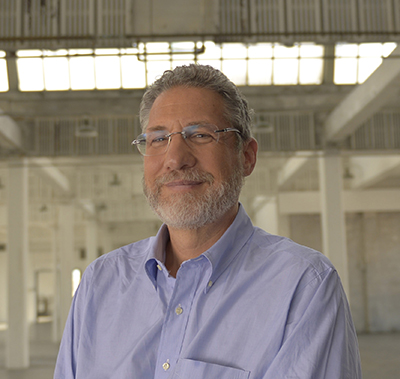

Jonathan F.P. Rose’s business, public policy and not-for-profit work all focus on creating more environmentally, socially and economically resilient cities. In 1989, Mr. Rose founded Jonathan Rose Companies LLC, a multi-disciplinary real estate development, planning, and investment firm, which creates real estate and planning models to address the challenges of the 21st century. Jonathan has lead the firm’s vision, program and growth, develop award winning new projects, investment funds and city plans to model solutions to the issues of housing, economic development and the environment.
Mr. Rose’s book on how create resilient cities, The Well Tempered City: What Modern Science, Ancient Civilizations and Human Behavior Teach Us About the Future of Urban Life, was published by Harper Wave in 2016.
Mr. Rose is a Trustee of Enterprise Community Partners and the Brooklyn Academy of Music. He is an Honorary Member of the American Institute of Architects and Honorary Trustee of the American Museum of Natural History and Jazz at Lincoln Center. Mr. Rose and his wife Diana Calthorpe Rose are the co-founders of the Garrison Institute and serve on its Board. The Institute connects inner transformation with outer solutions to relieve suffering in the fields of trauma, education and the environment. Mr. Rose graduated from Yale University in 1974 with a B.A. in Psychology and Philosophy, and received a Masters in Regional Planning from the University of Pennsylvania in 1980.
1:00 pm: Todd Witcher (Discover Life in America), Richard Carroll (recently retired from the World Wildlife Fund), Diane Nelson (East Tennessee State University), and Paul Bartels (Warren Wilson College)
‘Global Biodiversity Census’ (Todd Witcher and Richard Carroll) and ‘Tardigrades: The Little Things that Run The World!’ (Diane Nelson and Paul Bartels)
Seminar Room (EH 4100), 9 Circuit Drive, Nicholas School of the Environment at Duke University
‘Global Biodiversity Census’ (Todd Witcher and Richard Carroll)
In the past 17 years, Discover Life in America (DLIA) has unearthed a rich and unknown diversity of life in Great Smoky Mountains National Park.
Through its work, DLIA has added almost 10,000 species to the park’s species list and discovered close to 1,000 species never before described by science.
Now it is time to think bigger . . .
DLIA in partnership with the E.O. Wilson Biodiversity Foundation and as a part of the Half-Earth Project is launching the next phase of work, the Global Biodiversity Census (GBC). We are taking 17 years of expertise in coordinating a comprehensive inventory of the biological diversity from our home in the southern Appalachians to natural areas around the world.
The grand vision of the GBC initiative is to support the discovery, documentation and monitoring of all life on Earth and to disseminate this information in order to inform and inspire stewardship of our planet. In concert with other Half-Earth Project programs, and with the leadership and experience of DLIA and other partner organizations, the goal of the GBC Initiative will be to explore, discover, describe, classify and map the species of our planet in order to generate knowledge about regions of important biodiversity that informs and promotes conservation towards Half-Earth.
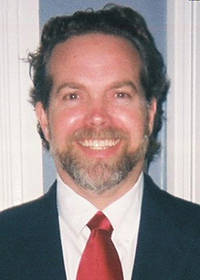

Todd P. Witcher is the Executive Director of Discover Life in America (DLIA). DLIA is the non-profit coordinating the All Taxa Biodiversity Inventory (ATBI) in Great Smoky Mountains National Park. Before becoming the ED at DLIA he worked as an educator for Ijams Nature Center in Knoxville Tennessee for 16 years. Todd has an undergraduate degree from the University of Tennessee in Biology (1987), a Masters in Business from Lincoln Memorial University (1991), and a Masters in Education from the University of Tennessee (1997). Todd is an eighth generation Tennessean having grown up in the small town of Red Boiling Springs, Tennessee where the Witcher family has lived since the late 1700’s. In his spare time Todd enjoys hiking, traveling, gardening and restoring old houses.
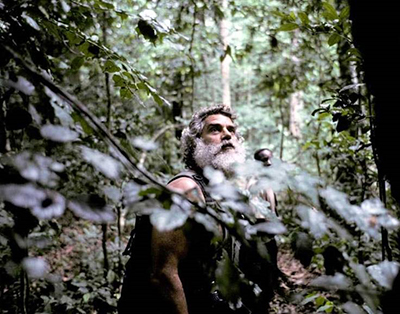

Recently retired from the World Wildlife Fund as Vice President for the Africa and Madagascar Programs, Richard Carroll’s conservation career spans almost 40 years. He earned a Doctor of Forestry Degree from the Yale School of Forestry and Environmental Studies, with a dissertation on the feeding ecology of western lowland gorillas in the Central African Republic (CAR). From 1976 through 1992, he lived in CAR, studying to status of western black rhinos, forest and savanna elephants, gorillas and establishing conservation programs bringing together the imperative for protecting natural resources, the needs and rights of indigenous peoples, and the economic development of the country. This expanded into a Congo Basin wide program resulting in 40% of these forest in 11 conservation landscapes. Until retiring in February 2014, he managed the continent-wide, WWF Africa and Madagascar Programs as Vice President.
Carroll has extensive experience in large program planning, development and management including effective fundraising with the public and private sector. He is an integrated, global conservation leader with cultural sensitivity and diplomacy. He thrives in multi-cultural environment, working from local to global to promote sustainable conservation. He is a lifelong learner and listens closely to the voices of those whose livelihood depends on intact environments. He visualizes the big picture and inspire and convince decision makers to create large scale conservation efforts. As a story teller, public speaker, and communicator, he has developed and enhanced environmental education programs and inspired all sectors of the public to participate in conservation efforts.
Some signature accomplishments include: the establishment of the Dzanga-Sangha Protected Area Network in the Central African Republic; co-initiating of the CongoBasin Forest Partnership Program; enhancing Community Based Natural Resource Management in Namibia’s Conservancies.
‘Tardigrades: The Little Things that Run The World!’ (Diane Nelson and Paul Bartels)
An Example of Microscopic Exploration of Biodiversity for the Global Biodiversity Census
Tardigrades? What do `water bears’ have to do with Half-Earth? Well, you’ll hear lots about these curious creatures, but the study of Tardigrades in GSMNP is an example of the research methodology pioneered by DLIA for All Taxa Biodiversity Inventories. This successful structure will be replicated and expanded in the GBC in partnership with the E.O. Wilson Biodiversity Foundation. Key to the investigation into any of the taxa studied in the Park has been the establishment of Taxonomic Working Groups, aligning the few key experts in certain taxa, like Tardigrades, with para-taxonomists and citizen scientists, creating a diverse workforce for discovery and learning.
Inherent curiosity inspired the pursuit of discovery and exploration by early naturalists, leading to the description of tardigrades from every biome on Earth, including marine, freshwater, and terrestrial habitats. These ubiquitous animals, although microscopic in size, have stimulated scientists around the world to investigate their enigmatic ability to dehydrate or freeze and yet come back to life and to withstand the rigors of outer space. Where do tardigrades live? How do they survive? What importance are they to humans? Why does everyone want a pet tardigrade?
The lecture will introduce you to these amazing animals, and the workshop will give you hands-on experience in finding them in your own backyard. Come and explore the world of the water bear! This Tardigrade presentation will include a 50 minute introduction to Waterbears by Dr. Diane Nelson followed by a Tardigrade workshop by Dr. Paul Bartels to allow participants to get “up close and personal” with these fascinating creatures.
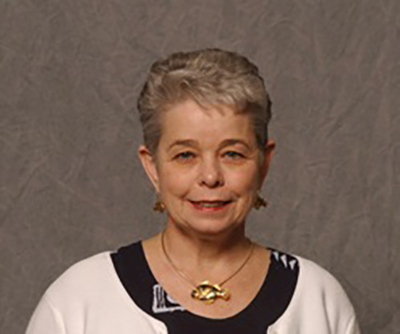

Professor Emerita at East Tennessee State University. Dr. Nelson’s research interests are two-fold: tardigrade ecology/systematics and behavior of marine fishes. For the past 15 years she has been working with Dr. Paul Bartels, Warren Wilson College, on tardigrades of the Great Smoky Mountains National Park as part of the Discover Life in America biodiversity project. They have discovered new species (about 15 – 20) and new records (about 80) for the park. Dr. Nelson also works with Dr. Eugenie Clark, Mote Marine Laboratory, Sarasota, on the reproductive and feeding behaviors of the convict fish (Pholidichthys), venomous catfish (Plotosus), sand diver (Trichonotus), ocean triggerfish (Canthidermis), and whale shark (Rhincodon) in Papua New Guinea, the Solomon Islands, Indonesia, and the Sea of Cortez. They have also studied the tilefish (Malacanthus) and garden eels (Heteroconger) in the Caribbean.
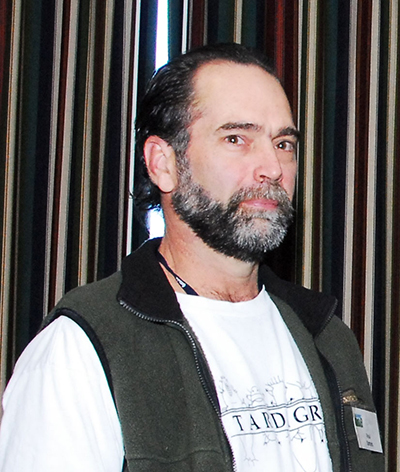


Dr. Paul Bartels is a professor of biology at Warren Wilson College in Asheville, NC. He is a zoologist with interests in ecology, evolution, and marine biology. Over the past 15 years, he and his students have worked extensively on the poorly known Phylum Tardigrada, or water bears. The inventory of tardigrades in the Great Smoky Mountains National Park as part of the All Taxa Biodiversity Inventory is one of the largest surveys ever done on this group, resulting in 77 new park records and 15 species new to science. More recently, Dr. Bartels has combined his expertise in tardigrades with his lifelong passion for marine biology. Marine tardigradesare the evolutionarily basal group for this phylum, and they are so littlestudied, only 200 species are currently known. Recent tardigrade expeditions have taken Bartels to French Polynesia, the Bahamas, and the British Virgin Islands.
2:00 pm: Jon Hutton (Luc Hoffmann Institute) and Craig Mills (Vizzuality)
‘Mapping a Credible Nature-First Approach to Land-Use for Half-Earth’ (Jon Hutton) and ‘Mapping Half the Earth’ (Craig Mills)
Field Auditorium (EH 1112) , 9 Circuit Drive, Nicholas School of the Environment at Duke University
‘Mapping a Credible Nature-First Approach to Land-Use for Half-Earth’
Jon Hutton is Director of the Luc Hoffmann Institute, a WWF-International partner based in Switzerland. He joined the institute in March 2016 after ten years as Director of the UNEP World Conservation Monitoring Centre (UNEP-WCMC) in the UK. Jon joined UNEP in this role in 2005 having previously worked for 25 years in Africa on nature conservation and rural development issues.
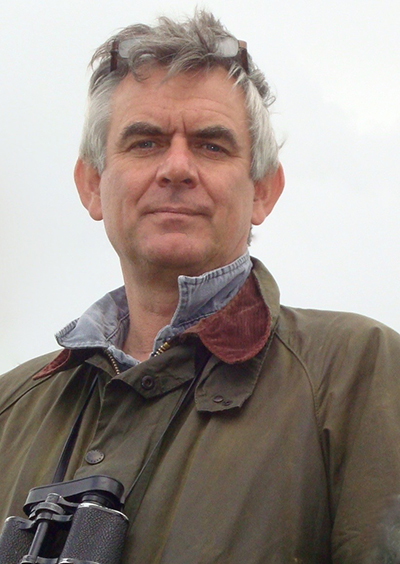

An ecologist who graduated from the University of Cambridge in 1978, Jon studied African wildlife management at the University of Zimbabwe, completing a DPhil in crocodile ecology in 1984. He went on to work in southern Africa in a range of positions in governments, NGOs and the private sector in the fields of natural resource management and rural development. During his years in Africa he gained a diverse portfolio of professional skills and some unique insights into the complex interplay between politics, economics and environmental policy.
Jon Hutton has produced more than 50 peer-reviewed papers and book chapters as well as dozens of reports and conference proceedings covering issues such as conservation policy, wildlife and protected area management, community-based natural resource management, the sustainable use of natural resources and the relationship between conservation and poverty. In recognition of his academic interests he was elected a Member of Hughes Hall College, Cambridge in 2005 and an Honorary Professor of Sustainable Resource Management 2007.
‘Mapping Half the Earth’ (Craig Mills)
If we commit half the planet’s surface to nature, the immediate question arises, where?


Using beautiful maps as illustration, Craig will explore the current state of biodiversity mapping and how it can be used to help figure out where to protect. He will discuss some of the techniques used to visualize maps on the web in a way that engages, informs and delights people. When done right, maps can be nearly as inspiring as the nature they represent!
Craig Mills is CEO of vizzuality. Craig has spent over 20 years working as a data activist, first with the UK government to map and model the movement of depleting fish stocks and the fishing fleets chasing them. From there Craig went on to the UN Environment Programme where he led teams of engineers and designers working on communicating biodiversity and land planning mapping. Now at vizzuality, Craig works with the biggest non-profits and governments in the world – from the White House to the World Resources Institute, Conservation International to Care, The European Space Agency to NASA – to design applications that inform people’s learning and perspective and shape their decisions to improve our planet.
2:00 pm: Paul Bartels (Warren Wilson College)
‘A Microscopic Exploration of Biodiversity’



Lecture Room (LSRC A158) , 9 Circuit Drive, Nicholas School of the Environment at Duke University
Dr. Paul Bartels is a professor of biology at Warren Wilson College in Asheville, NC. He is a zoologist with interests in ecology, evolution, and marine biology. Over the past 15 years, he and his students have worked extensively on the poorly known Phylum Tardigrada, or water bears. The inventory of tardigrades in the Great Smoky Mountains National Park as part of the All Taxa Biodiversity Inventory is one of the largest surveys ever done on this group, resulting in 77 new park records and 15 species new to science. More recently, Dr. Bartels has combined his expertise in tardigrades with his lifelong passion for marine biology. Marine tardigradesare the evolutionarily basal group for this phylum, and they are so littlestudied, only 200 species are currently known. Recent tardigrade expeditions have taken Bartels to French Polynesia, the Bahamas, and the British Virgin Islands.
3:30 pm: Greg Carr (Gorongosa Restoration Project)
‘Window on Eternity’
Field Auditorium (EH 1112), 9 Circuit Drive, Nicholas School of the Environment at Duke University
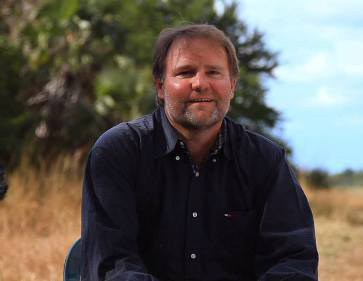

Integrated Conservation and Development in Gorongosa Park, Mozambique
As a humanitarian and prolific philanthropist, Mr. Carr has dedicated the last 15 years of his career to the betterment of the human condition and the world we live in. In 1999, he co-founded the Carr Center for Human Rights Policy at Harvard University. Joining family and friends, he co-founded the Museum of Idaho in 2000, a cultural and natural history museum in Idaho Falls that is the largest institution of its kind in the state. In 2008, Mr. Carr signed a 20-year agreement with the Government of Mozambique to restore and co-manage the country’s flagship national park, Gorongosa. National Geographic Television chronicled the Park’s restoration in their film Africa’s Lost Eden.
4:30 pm: Closing Event: Lecture by Jeff Sachs (Columbia University / Center for Sustainable Development / UN Sustainable Development Solutions Network)
‘Forging Global Cooperation to Save the Biosphere’
Field Auditorium (EH 1112), 9 Circuit Drive, Nicholas School of the Environment at Duke University
Jeff Sachs will be signing his latest book, Building the New American Economy: Smart, Fair and Sustainable at the reception following his lecture.


Jeffrey D. Sachs is a world-renowned professor of economics, leader in sustainable development, senior UN advisor, bestselling author, and syndicated columnist whose monthly newspaper columns appear in more than 100 countries. He is the co-recipient of the 2015 Blue Planet Prize, the leading global prize for environmental leadership. He has twice been named among Time Magazine’s 100 most influential world leaders. He was called by the New York Times, “probably the most important economist in the world,” and by Time Magazine “the world’s best known economist.” A recent survey by The Economist Magazine ranked Professor Sachs as among the world’s three most influential living economists of the past decade.
Professor Sachs served as the Director of the Earth Institute from 2002 to 2016. He was appointed University Professor at Columbia University in 2016, and also serves as Quetelet Professor of Sustainable Development, and Professor of Health Policy and Management at Columbia University. He is Special Advisor to United Nations Secretary-General Ban Ki-moon on the Sustainable Development Goals, and previously advised both UN Secretary-General Ban Ki-moon and UN Secretary-General Kofi Annan on the Millennium Development Goals. He is a Distinguished Fellow of the International Institute of Applied Systems Analysis in Laxenburg, Austria. Sachs is currently Director of both the Center for Sustainable Development, and the UN Sustainable Development Solutions Network under the auspices of UN Secretary-General Ban Ki-moon.
5:30 pm: Reception Featuring Book-Signings with E.O. Wilson (Half-Earth: Our Planet’s Fight for Life) and Jeff Sachs (Building the New American Economy: Smart, Fair and Sustainable), Tropical Conservation Student Posters Display, and Refreshments.
Outside of Field Auditorium (EH 1112), 9 Circuit Drive, Nicholas School of the Environment at Duke University
The reception will feature book-signings with:
E.O. Wilson, Half-Earth: Our Planet’s Fight for Life
and
Jeff Sachs, Building the New American Economy: Smart, Fair and Sustainable
The Tropical Conservation Student Poster display will cover topics that are wide-ranging and illustrate novel contributions by the natural, social, and engineering sciences toward addressing biodiversity conservation challenges in the tropics/subtropics. The 13 posters in the display are from a mix of students at all levels (undergrad, master’s, doctoral) from Duke and, in one instance, NC State.
Food and drink will be served at the reception.
BIODIVERSITY DAYS PARKING
Parking for all Biodiversity Days events at the Nicholas School of the Environment at Duke University is available in the Circuit Lot on Duke University’s West Campus. To enter the Circuit Lot, please use the lot entrance on LaSalle Street. The parking lot will open for attendee parking starting at 8:30 am on both Thursday and Friday mornings, and will be closed thirty minutes after each day’s closing events (4:30 pm on Thursday, and 7:00 pm on Friday).
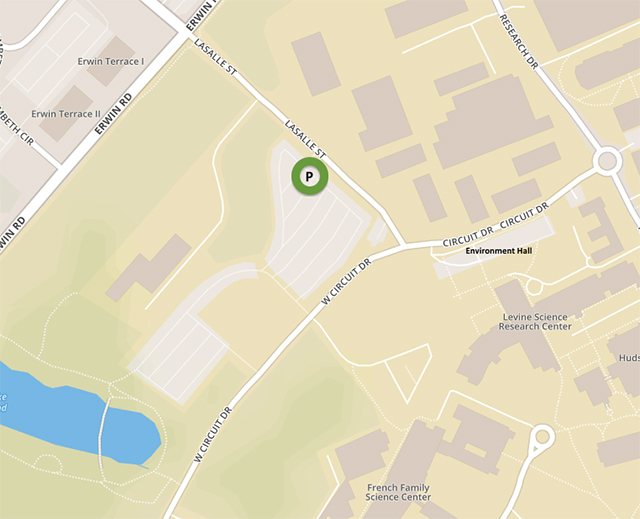

Biodiversity Days is sponsored by the E.O. Wilson Biodiversity Foundation, the Half-Earth Project, The Nature Conservancy, Discover Life in America, NatureServe, the Nicholas School of the Environment at Duke University, and the North Carolina Museum of Natural Sciences.

